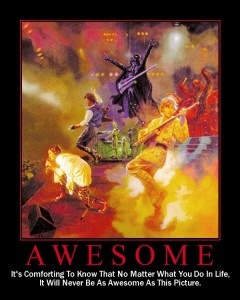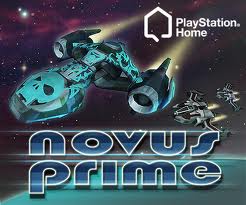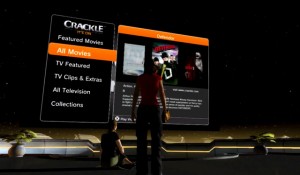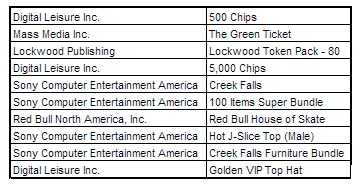SCEA Top Ten Home Items (By Units Sold) For January, With Consumer Trend Analysis
Information courtesy of GlassWalls, with commentary and analysis provided by NorseGamer
Yesterday, I spent about fifteen bucks in Home. Not that big of a deal, right? Except that, when added on top of what other people are spending, it can start to have a significant effect.
When it comes to revenue, social games almost always have a very sharp power-law distribution; i.e., most of the money is coming from a fairly small percentage of the population. Zynga, for instance, revealed in their IPO that only three percent of their user base actually spends any money on Zynga products.
Still, though. That’s three percent of three-hundred-million people. Even the most massively successful single-player games and MMO titles can’t come close to an audience like that.
This is why I find social games so fascinating. Maybe this is my inner Freakonomicist coming out to play, but I believe in the Law of Large Numbers as it applies to video gaming. Jersquall, in his interview with Codename and Lazy 8 Studios, wrote about how social games are like Billy Mitchell’s biplanes going toe-to-toe with decades of established Alfred Mahan battleship doctrine. And he was right. A battleship is enormously expensive to build and maintain, and it has a certain majestic romance to it, but eventually — inevitably — the asymmetric response of small planes with powerful bombs wins the war.
 There’s a certain amount of behavioral economics behind this trend as well. According to the ESA, the average video game purchaser is 41 years old. Now, granted, a fair number of these purchases are likely for their children, but what of the Gen-X and Gen-Y adults who purchase games for themselves? As a youth, I could happily drop eighty to one-hundred hours into a game and not think twice about it; today, as a working adult, that’s simply not an option. Nor do I particularly want to be bound to a single title for that length of time, because I have to keep up with its intricacies when my own life is complicated enough as is.
There’s a certain amount of behavioral economics behind this trend as well. According to the ESA, the average video game purchaser is 41 years old. Now, granted, a fair number of these purchases are likely for their children, but what of the Gen-X and Gen-Y adults who purchase games for themselves? As a youth, I could happily drop eighty to one-hundred hours into a game and not think twice about it; today, as a working adult, that’s simply not an option. Nor do I particularly want to be bound to a single title for that length of time, because I have to keep up with its intricacies when my own life is complicated enough as is.
Let’s take Skyrim as an example. This isn’t a game. This is a Tolkien novel hopped up on half a dozen Jägerbombs. Were this as little as ten years ago, I’d happily give the real world the finger and dive into the game with giddy abandon. Today, I look at how intricate and detailed and layered that arrow to the knee is, and I don’t even bother. I just don’t have that kind of time to invest in order to have a properly immersive experience.
 And yet. For some reason I can invest substantial time in Home and not bat an eyelash at it. Perhaps because its games require very little psychological investment. I beta tested The Old Republic before its release, and I have the distinct feeling that everyone I interacted with is now a Level 50 Jedi Grandmaster Pimpdaddy God, capable of amazing wu-shu feats of digital mayhem. Not really interested in being left behind, thanks. Whereas in Home, I can leave a Sodium game alone for months, pick it up again, and it’s like I never left.
And yet. For some reason I can invest substantial time in Home and not bat an eyelash at it. Perhaps because its games require very little psychological investment. I beta tested The Old Republic before its release, and I have the distinct feeling that everyone I interacted with is now a Level 50 Jedi Grandmaster Pimpdaddy God, capable of amazing wu-shu feats of digital mayhem. Not really interested in being left behind, thanks. Whereas in Home, I can leave a Sodium game alone for months, pick it up again, and it’s like I never left.
(Oh, and to all you snarky fools who have been using S2’s “taunt” feature just because it took you fuel additives to finally beat my laptimes…yeah, it’s so much more satisfying to pass your laptimes and not tell you. Stealth pwnage.)
This, I think, is what makes Home games so enjoyable. At least for me. No, they’re not particularly deep. No, they don’t give you that same cathartic rush as the first time you finally got Bastila to kiss you. But for a working adult, they’re just right: bursts of fun that you can pick up and put down as you desire.
And, if they’re built correctly, they can generate a lot of money, too. I don’t know about you guys, but I’ve already spent about thirty bucks on Novus Prime, and now that Vindication has come out, those sneaky peoples at Hellfire Games are about to suck at least another ten bucks out of me.
So. Getting back to the power-law distribution. My ten bucks aren’t that big of a deal. But when you multiply them out by the size of Home’s active user base (and factor that you’re probably only getting a narrow slice of them to spend any money, but that narrow slice is still a huge chunk of people), you start to see some interesting numbers.
Let’s take a look at what the first month of 2012 brought us in Home. As always, the top-ten list is compiled by volume of units sold, not by revenue.
There’s some fascinating information here; let’s dig into this.
1. Predictably, Digital Leisure made quite a splash with the Casino. Is anyone really surprised by this? It’s more or less a scaled-up version of the e-commerce model Mass Media used with Midway, and we’ve already got all of 2011’s data to show how consistently successful that was. Of particular note, the Casino’s Golden VIP Top Hat is on the list, which suggests that they made a fairly decent return on people wanting exclusivity and status. My question is this: with Digital Leisure having increased the amount and frequency of the free chips they give you, will this hurt their sales in the long run? And will traditional casino games have the same sort of staying power as Midway’s carnival games? I’ll be quite curious to see the results two fiscal quarters from now.
2. To the people on the Sony forum who believe that setting foot in a virtual casino will spontaneously turn you into a slobbering, drunken, bankrupt addict, or that Sony is somehow condoning illegal gambling activities…chill. I thoroughly dislike casino environments and gambling in general, but that doesn’t give me permission to impose my view of morality on others. First off, I’m fairly certain Sony’s team of flesh-eating lawyers make sure everything is legal before it’s published; they’re kinda picky about those sorts of things, ya know. And second, I’m getting a little sick of this “we have to shelter the children from everything” attitude. Guess what? Today’s world, even as punctuated as it is with sex, drugs and rock n’ roll, is nothing compared to western life as little as a century ago, when children were being used as factory workers to power the Industrial Revolution. Here’s a radical thought: how about talking to your child and preparing them for the big, bad outside world rather than perpetually sheltering them from it and pretending it doesn’t exist?
3. Mass Media continues to dominate with the Midway Green Ticket. Hell, the only thing that could dethrone it last month was something using practically the same exact formula. Should Digital Leisure’s chips continue to top the charts along with the Green Ticket, I think it’s logical to conclude that you’re going to see other developers follow the same business model with gaming deployments in Home. Which brings me neatly to my next point, which I’m going to boldface because I think it’s critical:
 4. I’m predicting this for Home 2012: it will be remembered as the Year of the Game. I strongly suspect that where you’re going to see a lot of development emphasis is on gaming experiences — potentially at the expense of personal estates, clothing items, furniture and so forth. Home’s PR tagline, even before the Hub was released, was to make Home itself a game. While that hasn’t happened yet, Home is living up to the other bit of PR, which is that it’s becoming a platform for games. So don’t be surprised if you see more development resources being put into gaming. A hot personal estate might be a bestseller for a month or two, but it’s blatantly obvious that the real long-term revenue stream comes from developing a successful game in Home. The real question is whether more intricate freemium games, such as Sodium2 or Novus Prime, generate more net revenue (even on lower sales volume) after development expenses than simplistic games from Midway and the Casino.
4. I’m predicting this for Home 2012: it will be remembered as the Year of the Game. I strongly suspect that where you’re going to see a lot of development emphasis is on gaming experiences — potentially at the expense of personal estates, clothing items, furniture and so forth. Home’s PR tagline, even before the Hub was released, was to make Home itself a game. While that hasn’t happened yet, Home is living up to the other bit of PR, which is that it’s becoming a platform for games. So don’t be surprised if you see more development resources being put into gaming. A hot personal estate might be a bestseller for a month or two, but it’s blatantly obvious that the real long-term revenue stream comes from developing a successful game in Home. The real question is whether more intricate freemium games, such as Sodium2 or Novus Prime, generate more net revenue (even on lower sales volume) after development expenses than simplistic games from Midway and the Casino.
 5. Lockwood continues to dominate with its Gift Machine. And well they should. In terms of behavioral economics, it’s a knockout: they realized that people want to give gifts to each other, and they capitalized on this behavior. Considering how long they’ve been raking in the money with the Gift Machine, I’m frankly surprised no other developer has created their own version of it, with their own proprietary goodies. I want an nDreams Dream Machine. I want a LOOT Machine. I’d say I wanted a Hellfire Machine, but that sounds a bit too much like Terra_Cide with a howitzer.
5. Lockwood continues to dominate with its Gift Machine. And well they should. In terms of behavioral economics, it’s a knockout: they realized that people want to give gifts to each other, and they capitalized on this behavior. Considering how long they’ve been raking in the money with the Gift Machine, I’m frankly surprised no other developer has created their own version of it, with their own proprietary goodies. I want an nDreams Dream Machine. I want a LOOT Machine. I’d say I wanted a Hellfire Machine, but that sounds a bit too much like Terra_Cide with a howitzer.
6. Glancing at the top four items on the list, it seems like Home’s citizenry is really into their microtransactions. It’s also worth noting that the 100 Items Super Bundle makes another appearance on the list, and considering that other “bundle” sales have been popping up in Home, it suggests that this is an effective technique for generating revenue off of low-selling items, and creating supplemental revenue for commodities which have been on the market for a long time. Sure, this does create some economic incentive to adopt a wait-and-see approach when purchasing — just as you can buy that really hot DVD title at Walmart six months from now for a fraction of the price — but I doubt it’s going to affect new-product sales figures that much. At least, for really desirable commodities.
7. Okay, I’ll bite: what the hell do people see in Creek Falls? In particular, why did that estate (and its furniture bundle) crack the top ten, whereas the Gothic Manor and the Nebula Airship (along with their respective furniture bundles) didn’t? I get that everyone’s aesthetic tastes will differ, but really, Creek Falls looks like a warehouse turned into an oversized timeshare unit in Appalachia. Of particular note, all three estates had bonus features tied into the Mansion, and yet Creek Falls’ was arguably the most overt (a built-in hot tub). And, unless I’m mistaken, they all came to market at the same time. So how much of a factor did Mansion ownership play in the sales of this specific estate, and do people in general seem to prefer a nature-themed estate over something more futuristic or gothic?
8. Hey, Red Bull’s on the list. Cool. I’m not into the whole skateboard culture in real life — check out Unsane’s “Scrape” video to find out why — but House of Skate does certainly provide some fun entertainment. Despite the utter butchering of the Red Bull Beach, I’m still happy to see them doing well in Home.
 9. Will someone tell Home’s prominent cross-dressing fashionistas that they need to spend some money? It was always eyebrow-archingly suspicious that female clothing items sold in such quantities despite the fact that Home’s population is, um, rather hirsute, so it’s interesting to see this trend reversal continue. Female clothing items have been dropping off these lists for a while now, and here on the January list, the only stand-alone clothing item is male. Here’s the big question: considering Home follows the same power-law distribution as other social games, are there just no new female outfits coming out which sufficiently justify the expense? After the explosion of content in 2011, are the wardrobes finally full of enough variety? Which brings me to my final point:
9. Will someone tell Home’s prominent cross-dressing fashionistas that they need to spend some money? It was always eyebrow-archingly suspicious that female clothing items sold in such quantities despite the fact that Home’s population is, um, rather hirsute, so it’s interesting to see this trend reversal continue. Female clothing items have been dropping off these lists for a while now, and here on the January list, the only stand-alone clothing item is male. Here’s the big question: considering Home follows the same power-law distribution as other social games, are there just no new female outfits coming out which sufficiently justify the expense? After the explosion of content in 2011, are the wardrobes finally full of enough variety? Which brings me to my final point:
10. There’s a law of diminishing returns in Home. Remember the days when you’d comb through Home’s various shops, looking for new stuff? Remember when something new would come out and you’d see practically everyone wearing it, and everyone hanging out at the same new estate? Those days are over. Unless you religiously follow AlphaZone4 (which you should be doing anyway), it’s virtually impossible to keep up with the deluge of content that flooded Home over the last twelve months, and continues to do so. Yet the catch with this is that not only will stuff slip through the cracks, but if most of Home’s sales revenue is coming from a fairly small percentage of core users, how much stuff do they really need?
How many apartments along a similar theme do you really want to own? How many variations on jeans? How much furniture? If there’s one thing I’ve noticed by following these top-ten lists, it’s that there seems to be a saturation point.
 One way to stave this off is to broaden your user base. Which, of course, the Hub is designed to do: reach out to the broader audience of the PlayStation Network and entice them to visit (or, as the PR so aptly states, reimagine) Home. But that means reaching out to gamers who took a look at a social world with limited gaming and decided they really didn’t want to invest money in estates, furniture and clothing. They wanted games.
One way to stave this off is to broaden your user base. Which, of course, the Hub is designed to do: reach out to the broader audience of the PlayStation Network and entice them to visit (or, as the PR so aptly states, reimagine) Home. But that means reaching out to gamers who took a look at a social world with limited gaming and decided they really didn’t want to invest money in estates, furniture and clothing. They wanted games.
Hence why 2012, in Home, will be the Year of the Game. I’m almost positive of this. No, I have no special gift for prognostication, but let’s face it: it’s the next logical step. Home’s best source of long-term commodity sales revenue, both from the existing community and the newer users entering Home, comes from gaming microtransactions. And it avoids the saturation that other revenue channels are risking.
What does this mean for us, the Home community?
Well, I think it’s good news.
If Home follows the same pattern it’s shown over the last few years, there will be at least two major core client updates which enhance Home’s functionality and provide at least some of the items on the community wish list. And if Home shows more net revenue on paper, Sony will be more likely to commit future resources to its development, and other prominent third-party developers will continue to invest in the platform as well.

In ANY estate you own!? LOOT needs to call the Federal Reserve, because they're gonna be printing money.
Further, there are going to be some major social commodities put up for sale in Home this year. LOOT’s already announced a portable EOD commodity, which I think is going to easily be one of Home’s bestselling items of all time. And I suspect there’s more coming.
There are those who feel that Home has somehow lost its soul, or that Home abandoned its original premise — to be a social network for gamers. That Home didn’t live up to what it could have been, or that Home is littered with broken promises. I honestly couldn’t disagree more. Though Home has its share of technical issues which are being ironed out, and there’s certainly no shortage of trolls and bad behavior from the less savory elements of the community, Home itself has done a remarkable job of evolving within the technological and fiscal constraints it has to work with.
Bring on 2012.





 LinkedIn
LinkedIn Twitter
Twitter
This is definitely an interesting time in Home. The tickets/tokens/coins are starting to dominate the list. I have been saying that Home sells experiences. The question is whether it is more enticing to spend money on a game experience than a virtual item? The game is more temporary, but also more experience than say a couch. As long as people see spending their money in Home similar to spending it on a movie, it will go well. Home is entertainment and needs to be compared in value to other types of entertainment. When it is, Home does extremely well on the dollar per hour scale.
I loved the comment about sheltering the children. That is how I feel and I love to see it in print. Excellent observations.
I took a moment to think about what I purchased on Home in the past month. Actually, it only took half a moment. I didn’t buy anything from SCEA. A couple of items caught my fancy in EU.
The Mahjong personal space…because I love the design. Way more charming than mansions of the gaudy, gold or dark, gloomy variety! I was totally unfamiliar with the game of Mahjong but it’s entertaining as well.
I also had to have the silver-buckled, gothic boots in EU because I love the ones I have in NA. I need a pair of those in real life.
That’s about it. I’m more than satisfied that I don’t fall into the Top 10 sales demographic on Home. My purchases on Home or in real life are always based upon what I want and not what some marketing department tries to convince me that I need. I think I bought a Green Ticket about a year ago because I wanted the golf cart. The popularity of the Falls Creek line is baffling to me as well.
Don’t you feel that the lack of clothing items on the list is due to the wide variety of each option released each week? It’s not unusual for a new top to be released in 5 different colours. Or 5 new hairstyles released at once. These items are popular but no single version may be dominant enough to reach the top 10 list.
That’s an interesting point, Liza; it’s possible that too much choice is “splitting the vote,” so to speak. Same might also hold true for the gemstone suits.
One of the things I didn’t point out in the article is that, like you, I don’t fall into the January top-ten sales demographic either. I don’t own anything on that list. I don’t get a sense of SCEA marketing trying to aggressively push any of that stuff on me, though; it’s just clear that my purchasing habits follow more of a social trend than a gaming trend (with the exception of Novus Prime and Sodium2).
Well, I like Creek Falls and I find it unique. I’ll probably pick it up this month. It doesn’t surprise me that the Gothic Manor and Nebula Airship didn’t sell as well. Didn’t the Cutteridge Estate and the Loot Space Apartment just “do it better”?
Let’s not forget that things like clothing are specific to a gender, so they’ll always sell in lesser quantities than, say a personal space, or the generic token/chip packs. It actually makes sense that the majority of top sellers are non-gender specific items.
Personally, I find that I rarely buy individual articles of clothing, unless it’s a costume. I find I get more than enough individual clothing items for free as rewards and whatnot, that spending actual money on them feels like a bit of a waste.
What’s interesting, though, is that if we look back at 2011’s lists, female-specific clothing was much more prominent. It slowly tapered off as the year progressed, until we’re now at the point where it’s conspicuous by its absence.
My hunch is that 2012, particularly the latter half of the year, is going to be dominated by chips/tokens/etc. as gaming is pushed to the forefront.
Maybe it is because less females are coming onto Home..maybe the word is out..Home can be a not so friendly environment if your a girl..When you have to deal with guys sniffing your “patuty” or harassing you verbally, what the appeal..You end up spending your time either defending yourself or to keep running from place to place..many times I have had to stop dominating the race track at Sodium2 because some guy decided to see up close and personal my standards of grooming…
So,,,Digital Leisure is in 3 of the top 10 slots. Do I get to say “I told you so!” In the article that appeared in HSM last year http://www.hsmagazine.net/2011/06/lightning-in-a-bottle-recapturing-the-magic-of-the-poker-rooms/
I quoted the research we had done, interviewing 96 of the hard-core poker players who had been in the EA poker rooms on a daily basis. Only 2 out of the 96 said they would never buy chips to play. Now I stand and wait for a table with the fistful of chips I bought to play. It’s because poker is just too damned popular!